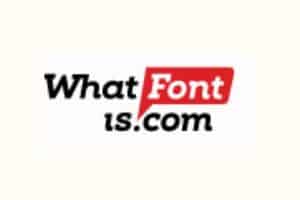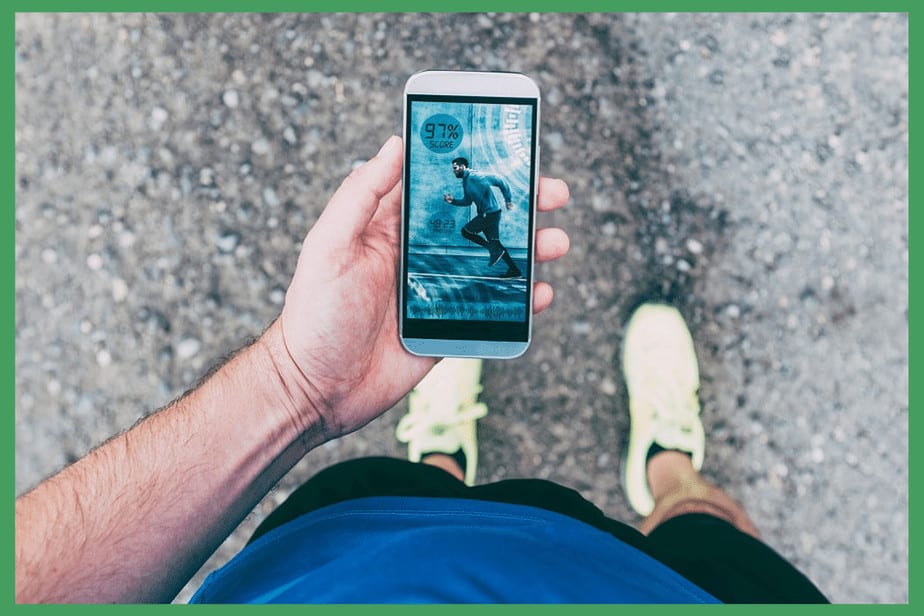Best Font Detector From Image

In this digital age, we rely on images to communicate with each other more than ever. Whether sharing photos on social media or including them in emails, we want our images to look their best. One way to make sure your images look their best is by using the right font. But how can you tell which font is being used in an image? Lets explore Best Font Detector From Image so that we could benefit from it.
The Different Types of Font Detectors Are
• Appearance-based detectors: These detectors look at a font’s appearance, such as its color and size.
• Matching-based detectors: These are based on the idea that fonts are stored in a database with their names and style specifications. For example, a computer program can look for the name of a font in an image and then match it with that font’s style specifications. Subsequently, the program can tell whether or not a font is being used.
• User-based detectors: These are based on the idea that people’s tastes differ. For example, if a person prefers the font “Times New Roman” and its style specifications, that person would be less likely to choose a font with another name or style specification. Fonts are typically stored in a computer’s system memory as bitmaps (sometimes called “glyph images”). A glyph is the smallest unit of a font that can represent text.
• Reflected-light detectors: These detectors are based on the idea that fonts reflect light differently. For example, if a font is stored as a bitmap (as described above), it will reflect light differently depending on the angle it is viewed.
• Digital cameras: These are very expensive but can measure the differences in reflection of a font. They require a camera with a good exposure time (e.g., 10 s or more) and can be used to measure the difference between fonts stored in different memory locations.
• Color filters: These measures the differences in light emission of a font, e.g., the difference between fonts stored in different memory locations.
• Software: This measures the difference in activation times of pixels that represent a character. These approaches to measuring the differences in a font are designed to measure only the differences in the properties of a character. They cannot be used to compare two characters, as these approaches measure only the properties of a single character and are not designed for comparing two characters.
• Character recognition: This is based on recognizing the character from which a pixel was activated. The recognition process can be designed to measure the difference between two characters, or it can measure the differences in a character as a scanner reads it.
• Character-to-character comparison: This is based on comparing the recognized characters. Character recognition techniques can measure the differences in pixel activation. They can be measured by character-to-character comparison techniques, which use more sophisticated algorithms like statistical analysis and pattern matching.
How the Font Detector Works

The font detector works by comparing the pixels of a line to all the other lines in the same column as the line in question. The detector searches for a pattern that is unique to each character. The pattern is a “unique combination of pixel locations” for each character. If the pattern doesn’t exist, the line isn’t a good line for that font.
Best Tools to Help You Identify Fonts in Images
The best tools to help you identify fonts in images are:
Identifont

Identifont is a font identification tool that can detect fonts from an image. It works by detecting the unique shapes of letters in an image and matching them to a library of fonts. This allows users to identify the font used in logos, marketing materials, and other graphics.
The Identifont tool is easy to use. Users upload an image or paste it into a URL, and the tool will automatically detect the font. Results are displayed with font name, style, and licensing information.
The Identifont tool is a valuable resource for graphic designers, logo designers, and anyone to identify a specific font. It’s also useful for finding alternate fonts similar to ones you already know.
Identifont, unlike most of the other items on this list, demands a bit more effort. Although the technique may take longer, algorithmic mistakes are less likely to arise as a result of this method. Fonts may be found in various categories, all accessible from the main page. “Fonts by Appearance” is perhaps the most beneficial choice if you’re looking for a font based on an image. Your search criteria will be narrowed down by a series of questions on your preferences for a certain font.
FontSquirrel Matcherator

FontSquirrel Matcherator is a machine learning tool that can detect the font used in any image. The user uploads an image, and the Matcherator tool will return a list of fonts that are most likely to have been used in the image. The Matcherator tool is based on a neural network, which makes it more accurate as it receives more data.
FontSquirrel is a terrific resource for font lovers, allowing you to browse and download thousands of fonts, participate in forums, and even purchase t-shirts. If you’re looking for a way to identify the fonts in an image, this is a must-have application. It’s fast and precise, allowing you to choose from various typefaces that closely match the one you input.
WhatFontIs

WhatFontIs is a free online font detector that allows you to identify the fonts used in an image. It works by extracting the text from the image and comparing it to a database of fonts. The results will show you the name of the font and other information such as size and color. You can also use WhatFontIs to find where to buy a particular font.
It’s as simple as clicking continue once you’ve uploaded an image with the font you’re looking for to the web app’s interface. The program provides a list of probable matches when choosing the fonts you wish to recognize. If you’re looking for a font that isn’t present in a picture, you can use the WhatFontIs Chrome addon.
In addition, the app offers two more key advantages.
- For Chrome and Firefox, some addons allow you to recognize any font you see online easily.
- Because PDFs are neither pictures nor standard text documents, it isn’t easy to extract fonts. PDF files can be uploaded to WhatFontIs’ scanner. The program lists fonts that are found after it scans the document.
Fontspring Matcherator

Fontspring Matcherator is a tool that helps identify fonts by scanning an image and matching it with the fonts in the Fontspring library. It’s easy to use- upload an image or insert a URL, and the Matcherator tool will do the rest. The results will show you a list of possible fonts that match the text in your image, as well as font previews and links to where you can buy them.
The Fontspring Matcherator tool helps find fonts for logos, web design, or any other project where you need to match text with a specific font. It’s also great for identifying unknown fonts- sometimes you’ll find a font on a website or in an advertisement, but you’re unsure what it is. With the Fontspring Matcherator tool, you can scan the text and determine what font was used.
If you want to use these fonts, you’ll have to pay a hefty sum to do so. 65-font families like as Minion Pro italic and bold and so on will cost you $569 if you wish to purchase it. This is a useful tool to experiment with to find out the font’s name.
WhatTheFont

WhatTheFont is a font detector from an image service. It can detect fonts from online images and tell you what the text is. It can help you find the right font for your design project or satisfy your curiosity.
Upload an image of the text you want to analyze, and WhatTheFont will return up to three possible fonts, complete with links to where you can buy them. Ensure the fonts in the image aren’t touching; the letter’s height should be 100 pixels, and the text should be as horizontal as feasible while using this application.
You may see the results to the left of the next page once you’ve submitted your image and entered it in the font you wish to identify. The font’s name, a sample, and the designer’s name will all be displayed here. The software allows you to consult an expert if you don’t have a good match.
Quora

You may have heard of Quora, the site where most people go to get their questions answered. You may post a picture to Quora and ask whether anyone knows the typeface’s name in the Typeface Identification category. There’s a strong possibility that one of the site’s numerous users will read your post and be able to offer assistance. You don’t have to pay for an expert’s opinion.
OpenCV Text Detection
Text detection is the process of detecting text in images. This is a useful task for many applications, such as optical character recognition (OCR) and automatic indexing of images. There are many different ways to detect text in an image. One popular approach is to use a machine-learning algorithm to learn the features of text characters and then use those features to locate instances of text in an image.
OpenCV provides a tool for detecting text in images called the “text detector.” The text detector uses a deep learning algorithm to learn the features of text characters. It can detect text in any orientation, including upside down and sideways. It can also detect multiple instances of text in an image simultaneously.
OpenCV’s EAST text detector is a deep learning model using a new architecture and training strategy. It can recognize text in 720p photos in near-real time at a frame rate of 13 frames per second, and it does so with precision unmatched in the field.
Conclusion: When utilizing a font for the first time, it’s a good idea to run it through a few different programs to make sure they all come up with the same result. These Best Font Detector From Image will make it much easier for you to find out the names of these fonts.




